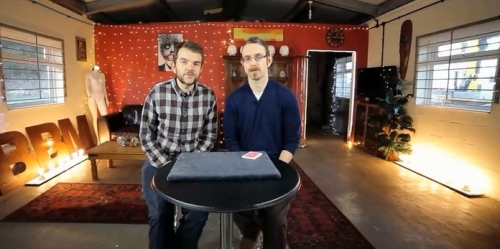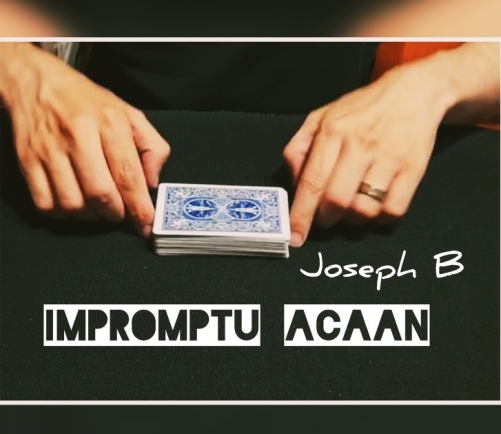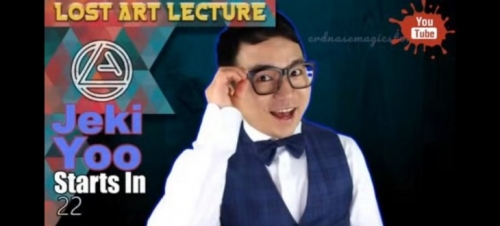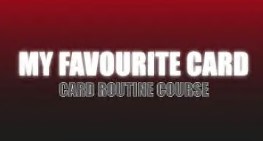Your position: Home / New arrival
NEW! Annals of Conjuring by Sidney Clarke
The Annals of Conjuring was a landmark in the recorded history of conjuring, representing the most detailed work on the subject at the time (and possibly even now) covering magic in England, Europe, America, and Asia up until the early 1920's.
The text was first published serially in the pages of The Magic Wand from 1924 to 1928, then later in book form (1929, 1983, 2001 ). This eBook is based on scans of the original pages from The Magic Wand, and save for the cover and preface ('borrowed' from the 2001 'Miracle Factory' edition), does not include any of the later-added indices, annotations or other material. All of the book versions of The Annals of Conjuring are rare, valuable, and hard to find.
A bit of the history of the text...
Clarke's friend John Nevil Maskelyne was the one that suggested he should write a history of conjuring and gave him access to the records at Maskelyne's theatre. Clarke's sources included existing literature, first-hand details from reliable individuals and contemporary records; original programmes and playbills of nineteenth-century performers; engravings of conjurers; and newspaper reports and advertisements.
At the time when Clarke began working on The Annals, very few histories of conjuring had yet been published. Works available to Clarke that focused mostly on conjuring (as opposed to occult magic) was Thomas Frost's The Lives of the Conjurors (1876), Henry Ridgely Evans' Magic and Its Professors (1902) and The Old and the New Magic (1906 and 1909), Houdini's The Unmasking of Robert-Houdin (1908 ) and his Conjurers' Monthly Magazine (1906-1908 ).
At the conclusion of his work, Clarke acknowledges the help from John Nevil Maskelyne, Angelo J. Lewis (Professor Hoffmann), Harry Houdini, and Adolphe Blind, all who had died before the serial work in The Magic Wand was completed. He also thanks David Devant, George W. Hunter, and Sidney Oldridge for their assistance.
At the beginning of his project, he furnished references to some sections of his text, but by and large he did not adopt any academic procedure. Most likely because he was writing for a magazine catering to the general interests of magicians.
Based on advertisements in The Magic Wand starting in 1919, the original intention had been to publish the work as a book. When only a few people expressed interest, he abandoned thoughts of publishing it in book form. George Johnson, editor of The Magic Wand, serialized it several years later.
It is also known that the original intention had been to include a bibliography in The Annals. However, the decision was made to issue it as a separate entity as The Bibliography of Conjuring and Kindred Arts. It was compiled by with friend Adolphe Blind and published by George Johnson in 1920.
Clarke's original manuscript, his earlier drafts of the text, and any notes he would have made, did not survive. In 1983, T. E. B. 'Tibby' Clarke confirmed that the only relevant book in the family's possession was copy number 1 of the limited edition of four copies of The Annals published by George Johnson in 1929, and that there were no other pertinent papers.
The Magic Wand was a British Magic Periodical that ran for 47 years from Vol. 1, No. 1 (September 1910) to Vol. 46, No. 256 (December 1957). It was equivalent to the US published Sphinx in terms of influence, longevity and timeframe.
The Magic Wand was a actually continuation of P. T. Selbit's magazine The Wizard, which was renamed when it was handed over to George Munro.
It started out as a monthly, suspended for a time during World War I, was transformed into a quarterly in 1921 after George Johnson had taken over, and finally became an undated 'four-part book' until the last issue which bore the number 256.
Professor Hoffmann made regular contributions and The Annals of Conjuring by Sydney W. Clarke was first serialized here.
The Annals of Conjuring was a landmark in the recorded history of conjuring, representing the most detailed work on the subject at the time (and possibly even now) covering magic in England, Europe, America, and Asia up until the early 1920's.
The text was first published serially in the pages of The Magic Wand from 1924 to 1928, then later in book form (1929, 1983, 2001 ). This eBook is based on scans of the original pages from The Magic Wand, and save for the cover and preface ('borrowed' from the 2001 'Miracle Factory' edition), does not include any of the later-added indices, annotations or other material. All of the book versions of The Annals of Conjuring are rare, valuable, and hard to find.
A bit of the history of the text...
Clarke's friend John Nevil Maskelyne was the one that suggested he should write a history of conjuring and gave him access to the records at Maskelyne's theatre. Clarke's sources included existing literature, first-hand details from reliable individuals and contemporary records; original programmes and playbills of nineteenth-century performers; engravings of conjurers; and newspaper reports and advertisements.
At the time when Clarke began working on The Annals, very few histories of conjuring had yet been published. Works available to Clarke that focused mostly on conjuring (as opposed to occult magic) was Thomas Frost's The Lives of the Conjurors (1876), Henry Ridgely Evans' Magic and Its Professors (1902) and The Old and the New Magic (1906 and 1909), Houdini's The Unmasking of Robert-Houdin (1908 ) and his Conjurers' Monthly Magazine (1906-1908 ).
At the conclusion of his work, Clarke acknowledges the help from John Nevil Maskelyne, Angelo J. Lewis (Professor Hoffmann), Harry Houdini, and Adolphe Blind, all who had died before the serial work in The Magic Wand was completed. He also thanks David Devant, George W. Hunter, and Sidney Oldridge for their assistance.
At the beginning of his project, he furnished references to some sections of his text, but by and large he did not adopt any academic procedure. Most likely because he was writing for a magazine catering to the general interests of magicians.
Based on advertisements in The Magic Wand starting in 1919, the original intention had been to publish the work as a book. When only a few people expressed interest, he abandoned thoughts of publishing it in book form. George Johnson, editor of The Magic Wand, serialized it several years later.
It is also known that the original intention had been to include a bibliography in The Annals. However, the decision was made to issue it as a separate entity as The Bibliography of Conjuring and Kindred Arts. It was compiled by with friend Adolphe Blind and published by George Johnson in 1920.
Clarke's original manuscript, his earlier drafts of the text, and any notes he would have made, did not survive. In 1983, T. E. B. 'Tibby' Clarke confirmed that the only relevant book in the family's possession was copy number 1 of the limited edition of four copies of The Annals published by George Johnson in 1929, and that there were no other pertinent papers.
The Magic Wand was a British Magic Periodical that ran for 47 years from Vol. 1, No. 1 (September 1910) to Vol. 46, No. 256 (December 1957). It was equivalent to the US published Sphinx in terms of influence, longevity and timeframe.
The Magic Wand was a actually continuation of P. T. Selbit's magazine The Wizard, which was renamed when it was handed over to George Munro.
It started out as a monthly, suspended for a time during World War I, was transformed into a quarterly in 1921 after George Johnson had taken over, and finally became an undated 'four-part book' until the last issue which bore the number 256.
Professor Hoffmann made regular contributions and The Annals of Conjuring by Sydney W. Clarke was first serialized here.
 USD
USD



